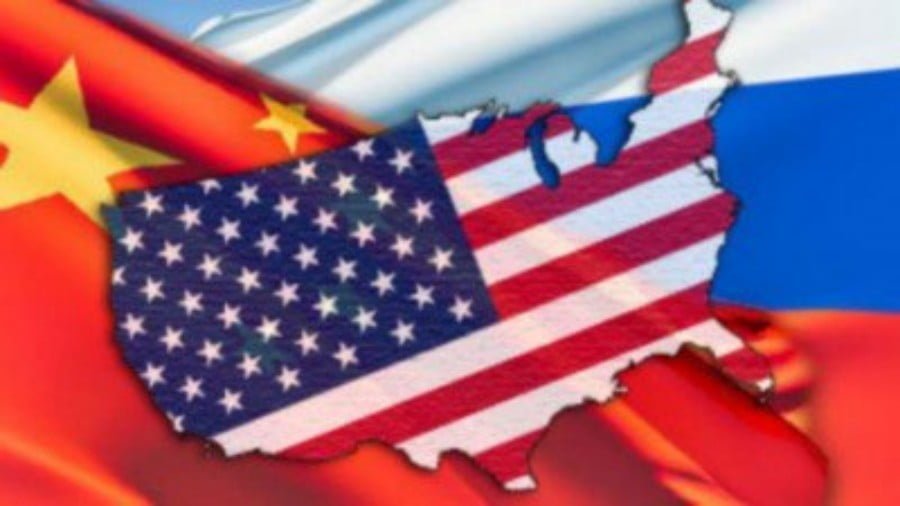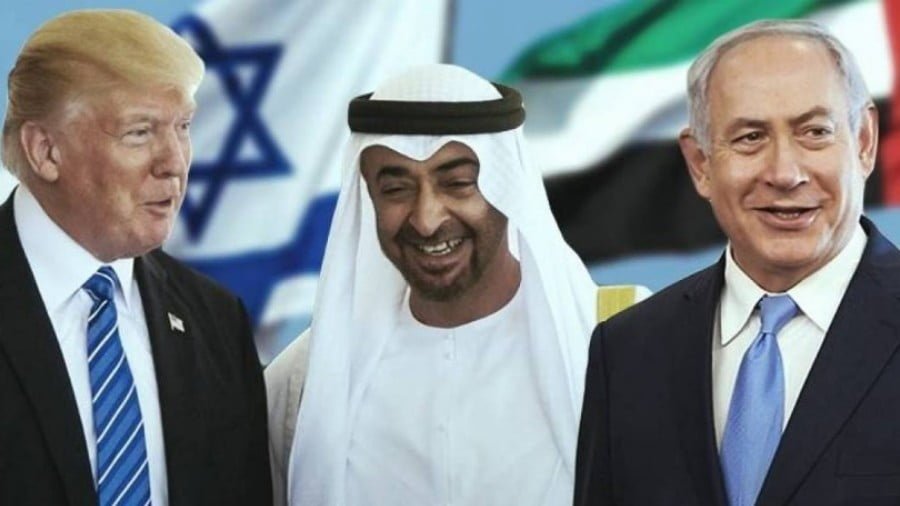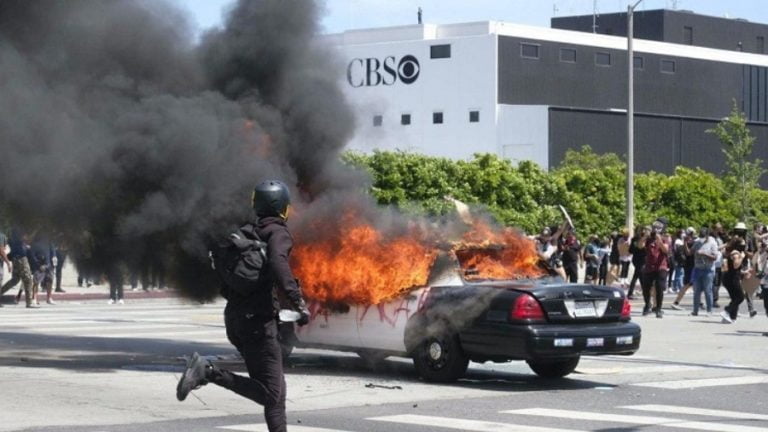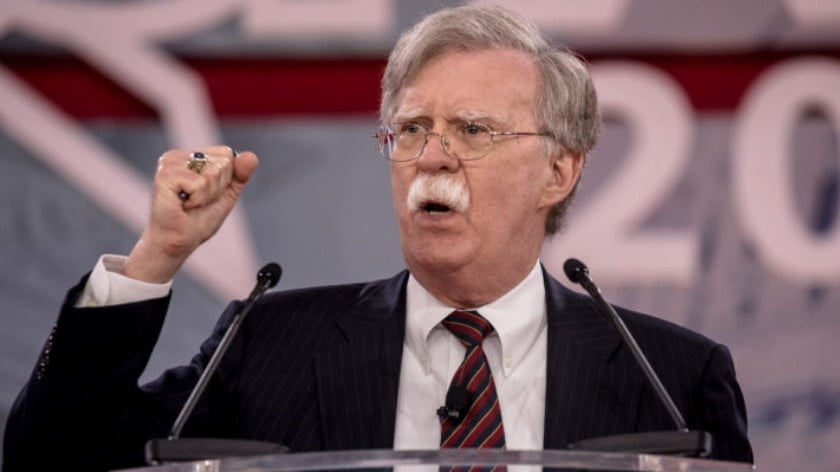Comparing & Contrasting Russia’s Pullbacks from Kharkov & Kherson Regions
It’s of the highest importance during this time to apply President Putin’s advice against indulging in wishful thinking by eschewing “5D chess” conspiracy theories and other coping mechanisms so as to not artificially inflate the hopes of Russia’s supporters and thus set them up for another possibly impending fall.
Wednesday evening’s decision by the Russian Ministry of Defense to commence the partial pullback of its forces from the right bank of the Dnieper River in the recently reunified region of Kherson triggered flashbacks of the move that it earlier undertook in Kharkov Region two months prior. Those across the world who stand in solidarity with Russia’s special operation and support its envisaged leadership of the Global Revolutionary Movement in the New Cold War were understandably upset by this development.
It’s of the highest importance during this time to apply President Putin’s advice against indulging in wishful thinking by eschewing “5D chess” conspiracy theories and other coping mechanisms so as to not artificially inflate its supporters’ hopes and thus set them up for another possibly impending fall. With a view towards that well-intended end, the present piece will compare and contrast Russia’s pullbacks from Kharkov and Kherson Regions by relying on the insight shared in two prior analyses:
* 12 September: “20 Strategic Observations About Kiev’s NATO-Backed Blitz Across Kharkov Region”
* 9 November: “The Three Most Likely Scenarios After Russia’s Partial Pullback From Kherson Region”
Those readers who aren’t yet familiar with those two abovementioned pieces should review them before proceeding. What follows is an application of the latter’s most recent insight to the former’s earlier observations, the purpose of which is to discover exactly what Russia has learned and improved upon since the pullback from Kharkov Region as well as what it hasn’t. Some insight specific to the most recent pullback from Kherson Region will then conclude the analysis.
Here’s what happened since early September after Russia’s surprise pullback from Kharkov Region:
* Russia Resolved Its Serious Intelligence Shortcomings
Unlike two months ago, Russia wasn’t caught off guard along the Kherson front as evidenced by its efforts over the past few weeks to evacuate civilians from that region and reinforce military defenses behind the Line of Control (LOC) on the left bank of the Dnieper River.
* Wishful Thinking Has Been Dispelled Among Those In Power
Another improvement that was achieved over the past two months is that there’s no indication that those in power are still under the allure of wishful thinking seeing as how Army General Surovikin informed the people well in advance of the likelihood that difficult decisions might have to be made.
* Russia Escalated Its Special Operation But Still Stopped Short Of Total War
The Kharkov pullback, the Anglo-American terrorist attack against the Nord Stream pipelines, and Kiev’s suicide bombing attack against the Crimean Bridge all contributed to Russia’s decision to escalate its special operation through more surgical strikes, yet it still declined to wage total war up until now.
* NATO Continues To Successfully Bolster Kiev’s Military Capabilities
For whatever reason, Russia has been unable to stop NATO from continuing to successfully bolster Kiev’s military capabilities, which resulted in its opponents chipping away at its supply lines all across the front and thus contributing to Moscow’s decision to commence its partial pullback from Kherson Region.
* Kiev Remains In The Mindset That The Ends Justify The Means
Just like in early September, Kiev still believes that the ends justify the means, which explains why Army General Surovikin decided to commence his forces’ partial pullback from Kherson Region since he couldn’t discount the possibility that his opponents might blow up the Kakhovka Dam to trap them.
Here’s how the Kherson pullback unfolded in comparison to the Kharkov one:
* Kiev’s Intentions Were Telegraphed Yet Moscow Still Couldn’t Thwart Them
The Kherson Counteroffensive covered up the Kharkov Counteroffensive, yet no such duplicity was at play in compelling Russia’s partial pullback from the first front two months later, which suggests a combination of Kiev enhancing its offensive capabilities while Moscow’s defensive ones deteriorated.
* Russia Still Tried To Defend The Kherson Front As Much As It Could
Kiev’s enhanced offensive capabilities did indeed successfully chip away at some of Moscow’s defensive ones, though the real game-changer turned out not to be the HIMARS or other over-hyped so-called “superweapons”, but the Damocles’ sword of Kiev threatening to blow up the Kakhovka Dam.
* Russia Wasn’t Caught Off Guard But Also Couldn’t Realistically Retain Its Position
Building upon the preceding insight, there was no way that Russia could realistically retain its position along the right bank of the Dnieper River in Kherson Region despite having fully prepared to defend it since the Kakhovka Dam terrorist attack scenario was credible enough to compel its partial pullback.
* Kiev Took Full Advantage Of The Kakhovka Dam Damocles’ Sword Scenario
Seeing as how Russia was fully prepared to defend the right bank of the Dnieper River in Kherson Region due to Kiev telegraphing its intentions there long ago, the attackers knew that the only way that they could achieve their goal was to leverage the Kakhovka Dam Damocles’ sword terrorist attack scenario.
* Russia’s Losses Were Minimal This Time Around Since Its Pullback Was Preplanned
Unlike during the chaotic pullback from Kharkov Region that resulted in it losing a lot of military equipment in order to save the lives of its servicemen, this time Russia’s losses were minimal since its partial pullback from Kherson Region was preplanned after Kiev started threatening the Kakhovka Dam.
Here’s some insight into whether the lessons from Kharkov remained relevant for Kherson:
* Russia & Kiev Are Still Fighting Two Somewhat Different Conflicts
While Russia did indeed end up escalating its special operation over the past two months through a spree of surgical strikes against strategic targets, it’s still eschewed waging total war, unlike Kiev which continues to go all-out in pursuit of victory (though at the expense of massive collateral damage).
* Kiev’s NATO-Backed Build-Up Continues In Spite Of Russia’s Surgical Strikes
Russia’s surgical strikes haven’t seriously impeded Kiev’s NATO-backed build-up as evidenced by its opponent’s continued enhancement of its military capabilities in spite of the nationwide blackouts that have hit that crumbling former Soviet Republic over the past few weeks.
* The Mainstream Media’s Infowar Operations Still Have A Semi-Solid Basis
Russia’s partial pullback from Kherson Region inadvertently reinforced the two primary thrusts of the Mainstream Media’s infowar operations: 1) convincing the Western public of the need to continue arming Kiev; and 2) sowing the seeds of doubt about Moscow among its supporters.
* Russia Somewhat Succeeded In Restoring Confidence In Its Forces
The surprise pullback from Kharkov Region was eventually followed by a spree of surgical strikes against strategic targets that somewhat succeeded in restoring confidence in Russia’s forces at home and abroad, but the partial pullback from Kherson Region might erode some of that prior progress.
* Kiev Continues Provoking Russia To Escalate The Conflict
Russia always responds to Kiev’s provocations by further escalating the conflict through more surgical strikes against strategic targets, yet this reaction has thus far failed to stop its opponent from engaging in more such provocations, which leads to the conclusion that these strikes have little deterrent value.
Here’s whether or not the prior forecasts from two months ago unfolded:
* Escalating The Conflict Didn’t Expand Russia’s Options Like Expected
Due to it continuing to eschew the total war mindset embraced by its opponent, Russia’s limited escalation of the conflict through surgical strikes against strategic targets didn’t expand its options like could have otherwise been the case, yet Moscow’s options also aren’t as limited as before either.
* The Kremlin’s Politically Driven Mindset Is Gradually Changing
The partial mobilization of experienced reservists and subsequent promulgation of martial law in the newly reunified region of Novorossiya proves that the Kremlin’s politically driven mindset is gradually changing towards a more militarized one, yet it still falls short of Kiev’s total war mindset.
* It’s Unclear Whether Moscow Has The Capabilities To Wage Total War
The continued reluctance in waging total war against its opponent despite Kiev already waging such against Russia adds credence to the speculation that Moscow might only have limited capabilities in this respect for whatever reason (e.g. supply chain bottlenecks, depleted stockpiles, etc.).
* It’s Also Unclear What Effect The Partial Mobilization Will Have
The partial mobilization of experienced reservists was recently completed, yet it remains unclear what effect it’ll have on shaping the military-strategic dynamics of the conflict, so it’s premature to share an opinion about this for the time being.
* The Opportunity For “Dark Putin” Might Have Already Passed
While there’s always a chance that President Putin will finally become the “Monster, Madman, Or Mastermind” that his friends and foes alike have hitherto imagined him to be, the window of opportunity for this to have the greatest impact appears to have passed and thus seems unlikely.
Here’s some insight specific to the partial pullback from Kherson Region:
* The Credible Kakhovka Dam Terrorist Attack Scenario Was A Game-Changer
Russia would probably have managed to retain its position along the right bank of the Dnieper River in Kherson Region had it not been for the credible scenario of Kiev destroying the Kakhovka Dam in order to flood the defending forces.
* The Southern Front Has Emerged As The Most Important In The Ukrainian Conflict
The latest military-strategic developments along the southern front have made it the most important one in the Ukrainian Conflict since any further encroachments by Kiev threaten to endanger Russia’s “Crimean Corridor”, which could set into motion a fast-moving sequence of dramatic events.
* Russia Is Definitely On The Strategic Defensive No Matter What Some Might Say
Denying the objectively existing fact that Russia is now on the strategic defensive is delusional at best and deceptive at worst, which thus discredits those who make such ridiculous claims and also risks artificially inflating the hopes of that country’s supporters prior to setting them up for another fall.
* Doom & Gloom Prophecies Are Premature & Miss The Bigger Picture
Despite the indisputable setback mentioned above, those who spew doom and gloom prophecies are doing so prematurely since the defensive position that Russia unexpectedly found itself in increases the chances of a stalemate, which is a scenario wherein Moscow would still strategically win.
* There’s Never Been A Better Chance For A Ceasefire Than Now
While it remains purely the realm of speculation at present, the argument can be made that there’s never been a better chance for a ceasefire than now due to the sequence of signals sent by the US prior to this week, its continued refusal to provide certain arms to Kiev, and growing fatigue among all parties.
———-
Upon comparing and contrasting Russia’s pullbacks from Kharkov and Kherson Regions, it becomes clear that while some of the conflict’s military-strategic dynamics have changed in Moscow’s favor, those that largely remained the same have thus nevertheless resulted in no major changes on the ground. Kiev continues gradually reconquering previously liberated territory, though its latest gains along the southern front were mostly the result of it threatening to destroy the Kakhovka Dam.
While Russia’s new defensive position on the left bank of the Dnieper River in Kherson Region works to its military-strategic advantage, Kiev might simply advance southward along the northern front from its existing positions on that same side, thus potentially neutralizing Moscow’s expected advantage. With this in mind, unless Russia can prevent any further losses along the over 1,000-kilometer-long LOC, then the overarching military-strategic dynamics will remain in Kiev’s favor and that of its Western patrons.
For this reason, it’s more urgent than ever that Russia either comprehensively enhances its defensive capabilities; carries out some sort of asymmetrical move(s) for decisively shifting the overarching military-strategic dynamics; and/or seriously contemplates an acceptable ceasefire scenario. Absent any of these three options being successfully employed, the doom and gloom prophecies spewed by some might become self-fulfilling, which is the worst-case scenario that must be avoided at all costs.







